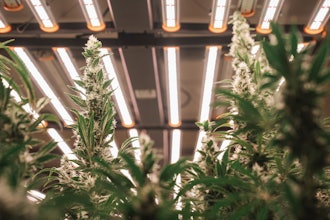
Organigram Global Inc., Canada’s largest cannabis company by market share, today released "High Impact, Green Growth: The Economic Footprint of Canada's Cannabis Industry," a national report done in partnership with the Business Data Lab at the Canadian Chamber of Commerce. The report, which examined figures for 2024, underscores the legal cannabis sector’s role as a major driver of jobs, economic growth, and innovation, highlighting why it should be included as a pillar of Prime Minister Mark Carney’s One Canadian Economy vision.
The report shows that in 2024 Canada’s legal cannabis industry contributed more than $16 billion to national GDP, generating nearly $29 billion in total economic output. To put its economic weight in perspective, cannabis's direct GDP contribution of $8.4 billion in 2024 exceeds that of forestry and logging ($3.4 billion), breweries ($2.6 billion), and wineries and distilleries ($975 million). The sector also supported over 227,000 jobs across the country, including 168,000 direct jobs in cultivation and retail, alongside 59,000 in supply, logistics and professional services. These contributions extend coast-to-coast, demonstrating cannabis’s place as one of Canada’s most significant homegrown industries.
“The legal cannabis sector is a high-value industry that is already delivering what the Prime Minister’s One Canadian Economy vision calls for: a nationally integrated, high-value industry that’s built in Canada, employing Canadians, and competing globally,” stated Beena Goldenberg, CEO of Organigram Global. “With bold national leadership, we can secure Canada’s place as the world’s cannabis leader; a driver of national economic resilience within the One Canadian Economy vision.”
Andrew DiCapua, Principal Economist with the Canadian Chamber of Commerce’s Business Data Lab and author of High Impact, Green Growth, reinforced this point, noting:
“Canada’s legal cannabis industry has a major economic footprint in Canada. It is not only an emerging, domestic, sector that has created and sustained hundreds of thousands of jobs nationwide, but one with economic impacts felt coast-to-coast through the vast cannabis supply chain. This is precisely the type of industry that fits within the One Canadian Economy vision.”
While the report focuses on cannabis’s overall economic footprint in 2024, its scale is striking when compared to traditional Canadian agricultural commodities. For example, legal cannabis is now New Brunswick's most valuable crop, with farm cash receipts hitting $269.4 million in 2022, more than potatoes and dairy. According to Agriculture and Agri-Food Canada, between 2020 and 2024, cannabis has averaged about $232 million annually in farm receipts, further underscoring its key role as New Brunswick’s leading agricultural product. Nationally, cannabis generated $2.7 billion in farm cash receipts in 2024, outmatching greenhouse vegetables ($2.63 billion) and field vegetables ($2.44 billion).
Yet, despite its outsized impact on Canada’s economy last year, and the significant export potential of Canada's global first-mover advantage, outdated policy frameworks are preventing the sector from realizing its full potential. The current excise tax structure is designed around outdated pricing models, which limits innovation and growth. Moreover, the absence of a national export strategy is preventing Canada from capitalizing on an international cannabis market projected to surpass CAD $140 billion by 2026, putting Canada on the backfoot of export diversification and international market development.
"We’ve built innovative, world-class cannabis production right here in Canada,” said Goldenberg, “If Canada is serious about building the strongest economy in the G7, then industries like cannabis, which is already a $16 billion engine of jobs and innovation, must be a pillar of the One Canadian Economy strategy. It’s time to modernize the rules, eliminate unnecessary barriers and unfair taxation, and give this industry the same opportunity to thrive as other strategic sectors.”






















